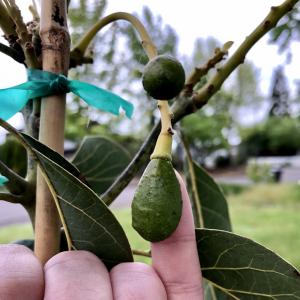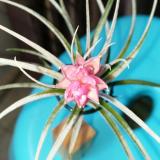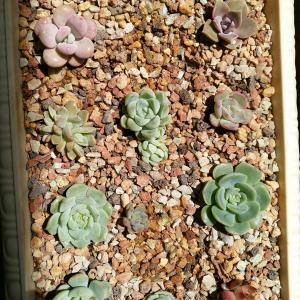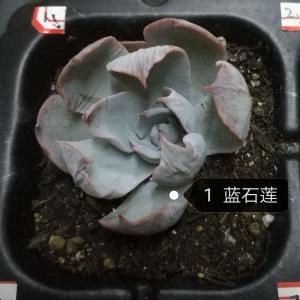文章
Miss Chen
2018年05月11日

Description: This perennial plant is ½–1½' tall and up to 3½' long, developing as a dwarf shrub or a short woody vine. The central stem is either ascending or sprawling, branching occasionally. The central stem and any lateral stems are light green or purple, terete or angular, and hairless. Pairs of opposite leaves occur at interval along these stems. Individual leaves are up to 2½" long and 1¾" across, obovate, hairless, and finely serrate-crenate along their margins. The upper surface of each leaf is medium green, while the lower surface is slightly more pale with raised pinnate veins. The petioles are about 1/8" (3 mm.) long. Cymes of 1-4 flowers occasionally develop from the axils of the leaves. The peduncle of each cyme is about 1-2" long, while the pedicels of individual flowers are much shorter. Individual flowers are up to 1/3" (8 mm.) across, consisting of 5 pale greenish purple petals, a short green calyx with 5 lobes, 5 short stamens, and a central pistil. The petals are nearly orbicular in shape and slightly overlapping.
The blooming period occurs from mid-spring to early summer and lasts about 1½ months. Each fertile flower is replaced by a tuberculate globoid fruit about ¾" across. This fruit usually has 3 lobed cells (less often, there are 5). The outer surface of the fruit is orange or pink. When it splits open along its lobes, the fleshy arils covering the seeds are revealed; they are scarlet. New rootlets can develop where the stems have contact with the ground; as a result, this plant can reproduce vegetatively.
Cultivation: The preference is partial sun to medium shade, moist to slightly dry conditions, and soil that is loamy or rocky. Well-drained areas are preferred. Because of its habitat of growth, Running Strawberry Bush can be used as a ground cover.

Range & Habitat: Running Strawberry Bush is an uncommon plant that is found only in NE Illinois, east-central Illinois, and southern Illinois (see Distribution Map), where it is native. Illinois lies along the NW edge of its range. Habitats include upland rocky woodlands, wooded slopes, thinly wooded bluffs, and shaded to semi-shaded areas along the edges of cliffs. Running Strawberry is a conservative species that is found in high quality habitats.
Faunal Associations: Information about floral-faunal relationships for this particular species is limited. The nectar and pollen of the flowers probably attract small bees and miscellaneous flies. Some insects that are known to feed on Euonymus spp. include Taedia evonymi (Euonymus Plant Bug), Otiorhynchus sulcatus (Black Vine Weevil), Unaspis euonymi (Euonymus Scale), caterpillars of Herpetogramma thestealis (Pyralid Moth sp.), caterpillars of Yponomeuta multipunctella (American Ermine Moth), and the larvae of Stenocorus cinnamopterus (Long-Horned Beetle sp.). The larvae of this latter insect bore through branches. The fruit of Running Strawberry Bush is probably eaten by the Wild Turkey and other birds, while the foliage is occasionally eaten by White-Tailed Deer and Cottontail Rabbits, even though both the fruit and foliage are supposed to be somewhat toxic.

Photographic Location: Along the wooded slope of a bluff in Vermilion County, Illinois.
Comments: This interesting shrub should be cultivated more often. Running Strawberry Bush differs from other Euonymus spp. by its low habit of growth (less than 2' tall) and stems that often sprawl across the ground (less than 4' long). Other Euonymus spp. are either taller or they have longer stems. The flowers of Running Strawberry Bush have 5 petals, while the flowers of most Eurasian Euonymus spp. in Illinois have only 4 petals. This low shrub can be confused with a small Euonymus americanus (Strawberry Bush). Running Strawberry Bush usually has obovate leaves that are widest above the middle, while the latter shrub has leaves that are widest at or below the middle. A mature specimen of Strawberry Bush is about 3-6' tall.
The blooming period occurs from mid-spring to early summer and lasts about 1½ months. Each fertile flower is replaced by a tuberculate globoid fruit about ¾" across. This fruit usually has 3 lobed cells (less often, there are 5). The outer surface of the fruit is orange or pink. When it splits open along its lobes, the fleshy arils covering the seeds are revealed; they are scarlet. New rootlets can develop where the stems have contact with the ground; as a result, this plant can reproduce vegetatively.
Cultivation: The preference is partial sun to medium shade, moist to slightly dry conditions, and soil that is loamy or rocky. Well-drained areas are preferred. Because of its habitat of growth, Running Strawberry Bush can be used as a ground cover.

Range & Habitat: Running Strawberry Bush is an uncommon plant that is found only in NE Illinois, east-central Illinois, and southern Illinois (see Distribution Map), where it is native. Illinois lies along the NW edge of its range. Habitats include upland rocky woodlands, wooded slopes, thinly wooded bluffs, and shaded to semi-shaded areas along the edges of cliffs. Running Strawberry is a conservative species that is found in high quality habitats.
Faunal Associations: Information about floral-faunal relationships for this particular species is limited. The nectar and pollen of the flowers probably attract small bees and miscellaneous flies. Some insects that are known to feed on Euonymus spp. include Taedia evonymi (Euonymus Plant Bug), Otiorhynchus sulcatus (Black Vine Weevil), Unaspis euonymi (Euonymus Scale), caterpillars of Herpetogramma thestealis (Pyralid Moth sp.), caterpillars of Yponomeuta multipunctella (American Ermine Moth), and the larvae of Stenocorus cinnamopterus (Long-Horned Beetle sp.). The larvae of this latter insect bore through branches. The fruit of Running Strawberry Bush is probably eaten by the Wild Turkey and other birds, while the foliage is occasionally eaten by White-Tailed Deer and Cottontail Rabbits, even though both the fruit and foliage are supposed to be somewhat toxic.

Photographic Location: Along the wooded slope of a bluff in Vermilion County, Illinois.
Comments: This interesting shrub should be cultivated more often. Running Strawberry Bush differs from other Euonymus spp. by its low habit of growth (less than 2' tall) and stems that often sprawl across the ground (less than 4' long). Other Euonymus spp. are either taller or they have longer stems. The flowers of Running Strawberry Bush have 5 petals, while the flowers of most Eurasian Euonymus spp. in Illinois have only 4 petals. This low shrub can be confused with a small Euonymus americanus (Strawberry Bush). Running Strawberry Bush usually has obovate leaves that are widest above the middle, while the latter shrub has leaves that are widest at or below the middle. A mature specimen of Strawberry Bush is about 3-6' tall.
0
0
文章
Miss Chen
2018年05月11日

Description: This herbaceous perennial plant consists of 1 or 2 basal leaves and a single-flowered inflorescence up to 6" tall. The basal leaves are 2½-6" long and ½-2" across; they are ascending to erect, elliptic-lanceolate in shape, and smooth (entire) along their margins. The upper leaf surface is mottled pale green and brown or greenish brown, while the lower surface is solid medium green; both surfaces are glabrous and the lower surface is often glaucous. The petioles of these leaves are relatively long, but they are located mostly or entirely underneath the ground surface. Immature shoots are single-leaved and they produce no flowers, while mature shoots have two leaves and they are single-flowered. Immature shoots are more common than mature shoots.
The inflorescence has a long flowering stalk that is terete, glabrous, and light green to pale reddish brown. This stalk is mostly erect or ascending, but it nods downward at its tip where the flower occurs. The nodding flower is ¾-1¼" long, consisting of 6 yellow tepals, 6 stamens, and an ovary with 3 erect stigmata. Initially, the tepals are barely separated from each other, but as the flower matures they become strongly recurved, exposing the reproductive organs. These tepals are narrowly elliptic-lanceolate in shape, and they are often tinted red or reddish brown along their outer sides. The stamens are about ½" long and their anthers are yellow or yellow-brown. The blooming period occurs during mid-spring and lasts about 2 weeks. Afterwards, the flowers are replaced by obovoid seed capsules that are about ½" in length or a little longer. These capsules are glabrous and their apices are truncate to rounded. At maturity, these capsules divide into 3 parts to release their seeds.

The root system consists of a corm with fibrous roots underneath, and 0-3 stolons. The stolons extend below the leaf litter, creating clonal offshoots from the mother plant. As a result, colonies of plants are often formed, consisting largely of immature shoots.
Cultivation: The preference is dappled sunlight to medium shade, more or less mesic conditions, and loamy soil with leaf litter and decaying organic matter. Most growth and development occurs during the spring before the trees fully develop their vernal leaves. This wildflower adapts readily to the shade of various deciduous trees. It takes several years of development (typically about 8 years) before individual plants will flower in a typical woodland setting.

Range & Habitat: The native Yellow Trout Lily is occasional in southern Illinois, while in the rest of the state it is uncommon or absent (see Distribution Map). Outside of southern Illinois, it is largely restricted to the eastern half of the state. Illinois lies toward the western range limit of this plant; it is more common further to the east. Habitats include rich woodlands, wooded bluffs, rocky woodlands, and banks of streams. Yellow Trout Lily is found in deciduous woodlands, where Sugar Maple (Acer saccharum), American Beech (Fagus grandifolia), and other deciduous trees are present.

Faunal Associations: The nectar and pollen of the flowers attract largely bees, including bumblebees, Mason bees, and Andrenid bees. One bee species, Andrena erythronii, is a weak oligolege (specialist pollinator) of Erythronium spp. (Trout Lilies). Like several other woodland wildflowers, the seeds of Yellow Trout Lily are distributed in part by ants, which are attracted to their food appendages. Because the leaves of this plant are relatively small and inconspicuous, they are browsed by White-tailed Deer to only a limited extent. The mottled pattern of the leaves helps to disguise them from such mammalian herbivores as they lack color vision.
Photographic Location: A deciduous woodland at Jim Smith's farm in Vermilion County, Illinois.

Comments: This is the only yellow-flowered Trout Lily (Erythronium) in Illinois, making it easy to identify. The other two species of Trout Lily within the state, Erythronium albidum (White Trout Lily) and Erythronium mesochoreum (Prairie Trout Lily), have either white flowers or bluish white flowers. Both the flowers and foliage of Yellow Trout Lily are quite attractive, although the blooming period is rather short and most plants fail to flower during any given year. In Illinois, Yellow Trout Lily is much less common than White Trout Lily. However, in states further to the east, the reverse is true: Yellow Trout Lily is more common than White Trout Lily.
The inflorescence has a long flowering stalk that is terete, glabrous, and light green to pale reddish brown. This stalk is mostly erect or ascending, but it nods downward at its tip where the flower occurs. The nodding flower is ¾-1¼" long, consisting of 6 yellow tepals, 6 stamens, and an ovary with 3 erect stigmata. Initially, the tepals are barely separated from each other, but as the flower matures they become strongly recurved, exposing the reproductive organs. These tepals are narrowly elliptic-lanceolate in shape, and they are often tinted red or reddish brown along their outer sides. The stamens are about ½" long and their anthers are yellow or yellow-brown. The blooming period occurs during mid-spring and lasts about 2 weeks. Afterwards, the flowers are replaced by obovoid seed capsules that are about ½" in length or a little longer. These capsules are glabrous and their apices are truncate to rounded. At maturity, these capsules divide into 3 parts to release their seeds.

The root system consists of a corm with fibrous roots underneath, and 0-3 stolons. The stolons extend below the leaf litter, creating clonal offshoots from the mother plant. As a result, colonies of plants are often formed, consisting largely of immature shoots.
Cultivation: The preference is dappled sunlight to medium shade, more or less mesic conditions, and loamy soil with leaf litter and decaying organic matter. Most growth and development occurs during the spring before the trees fully develop their vernal leaves. This wildflower adapts readily to the shade of various deciduous trees. It takes several years of development (typically about 8 years) before individual plants will flower in a typical woodland setting.

Range & Habitat: The native Yellow Trout Lily is occasional in southern Illinois, while in the rest of the state it is uncommon or absent (see Distribution Map). Outside of southern Illinois, it is largely restricted to the eastern half of the state. Illinois lies toward the western range limit of this plant; it is more common further to the east. Habitats include rich woodlands, wooded bluffs, rocky woodlands, and banks of streams. Yellow Trout Lily is found in deciduous woodlands, where Sugar Maple (Acer saccharum), American Beech (Fagus grandifolia), and other deciduous trees are present.

Faunal Associations: The nectar and pollen of the flowers attract largely bees, including bumblebees, Mason bees, and Andrenid bees. One bee species, Andrena erythronii, is a weak oligolege (specialist pollinator) of Erythronium spp. (Trout Lilies). Like several other woodland wildflowers, the seeds of Yellow Trout Lily are distributed in part by ants, which are attracted to their food appendages. Because the leaves of this plant are relatively small and inconspicuous, they are browsed by White-tailed Deer to only a limited extent. The mottled pattern of the leaves helps to disguise them from such mammalian herbivores as they lack color vision.
Photographic Location: A deciduous woodland at Jim Smith's farm in Vermilion County, Illinois.

Comments: This is the only yellow-flowered Trout Lily (Erythronium) in Illinois, making it easy to identify. The other two species of Trout Lily within the state, Erythronium albidum (White Trout Lily) and Erythronium mesochoreum (Prairie Trout Lily), have either white flowers or bluish white flowers. Both the flowers and foliage of Yellow Trout Lily are quite attractive, although the blooming period is rather short and most plants fail to flower during any given year. In Illinois, Yellow Trout Lily is much less common than White Trout Lily. However, in states further to the east, the reverse is true: Yellow Trout Lily is more common than White Trout Lily.
0
0
文章
巴黎铁塔
2018年05月11日
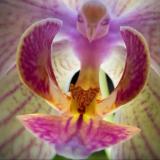
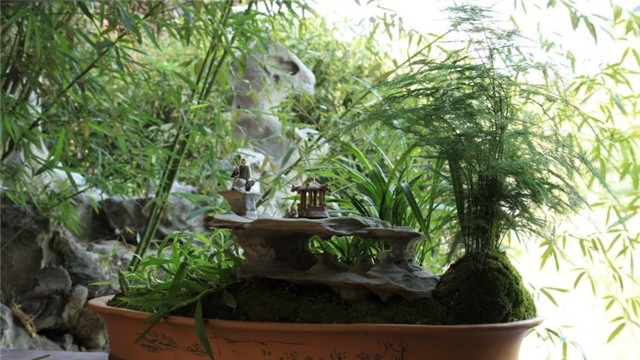
1、增加浇水
原因:长时间没给文竹浇水会导致植株缺水,一旦缺水,包括呼吸作用在内的一些列生理反应将无法正产进行,从而使得它出现黄叶。
解决方法:给它浇一些水,之后按照科学的方法浇水。

2、减少浇水
原因:给文竹浇了太多的水,土壤之中缠产生了积水,使它的根部受损,从而难以汲取养分,致使叶子缺少养分而发黄。
解决方法:给文竹松一松土,然后垫高花盆,放到通风处让土壤干下来。之后要适时适量浇水,一次不能浇的太多。

3、给它换土
原因:文竹的生长需要汲取土壤之中的养分,若是太久没有给它换盆,土壤之中的养分都被它吸收光了,它没有充足的养分供给,叶片就会发黄。
解决方法:给文竹换上新的,营养丰富的土壤。
4、减少光照
原因:盛夏的时候光照强度很高,若这时候让文竹长时间暴露在太阳下,它就会因为阳光的曝晒而被晒伤,叶子就会开始变黄。
解决方法:将文竹搬到房间中养护,不能让它被太阳直射。
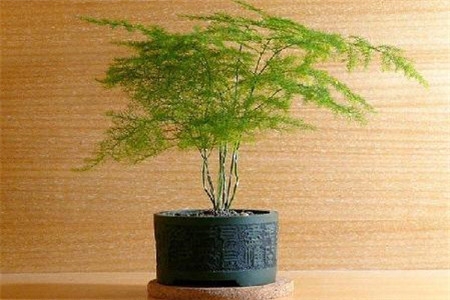
0
1
文章
巴黎铁塔
2018年05月11日


1、叶面追肥
(1)具体原因:如修剪太过,地上部分留有的枝叶都很少,那么地上和地下的部分就会失去平衡。进而,大量根系衰亡,就会致使整体的营养失调。如此时正是生长迅速的时候,就可能导致叶变黄。
(2)解决措施:用百分之零点三浓度的尿素来叶面追肥,每一个星期一次,连续三次。
2、喷药对付病虫害
(1)具体原因:如“根癌病”、“根结线虫”等,都可导致叶子发黄。
(2)解决措施:发现之后,要及时将遭病虫害的部分剪掉,然后喷药剂,比如波尔多液等。

3、提供充足光照
(1)具体原因:光照不足,叶绿素无法形成,叶子可能变黄,还可能出现变薄的现象。
(2)解决措施:尽量让植株接受充足的阳光。另外,还需注意修剪,使得透光度增加。
4、调节水分平衡
(1)具体原因:旱、涝都可能使叶子发黄,甚至死亡。
(2)解决措施:在降雨量非常小,或者进入雨季时,需针对性采取不同举措,前期浇水,后期排水,以调整水分的平衡。

5、疏花疏果
(1)具体原因:如果实太多,负重太多,养分就不足,因而会出现黄叶。
(2)解决措施:不要只追求产量,需疏花疏果,合理负重。

0
0
文章
巴黎铁塔
2018年05月11日

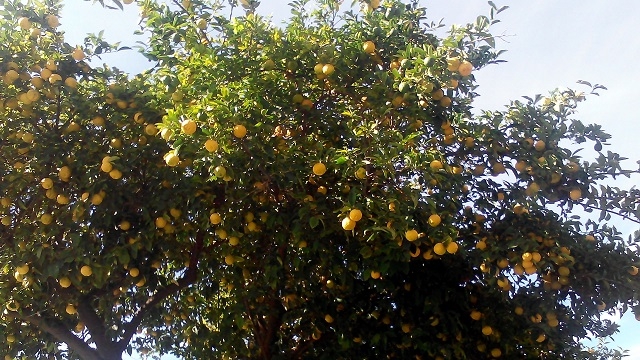
1、补充铁或氮元素
(1)具体原因:这两种元素缺乏都可能使叶子发黄,不过部位不一样。如缺铁,那么回叶肉变黄;如缺氮,它的叶脉会发黄。因此,可根据不同的症状确定到底该补充哪一种元素。
(2)解决措施:观察叶子的发黄部位,针对性地补充相应的元素。
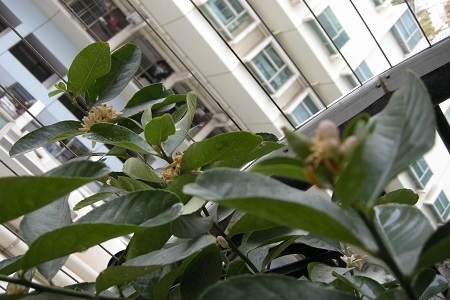
2、补充肥料
(1)具体原因:这种情况在开花时比较多发。这时需要的营养本来就多,若是不注重补充,很可能导致叶子泛黄。
(2)解决措施:需喷施一些肥料,比如磷酸二氢钾溶液。其中不仅含有氮、磷、钾等基本的元素,还有一些微量元素。往叶片上喷,半个月一次就行。

3、处理烂根
(1)具体原因:如根部腐烂,也可能使得叶子发黄。最有可能使根部腐烂的原因是积水太多,或肥料太浓。
(2)解决措施:需将烂掉的部分及周围一小部分都用刀刮除,并涂抹一些托布津。等到切口完全复原之后,再盖土。之后还需注意浇水不可太多,也不要施浓度太高的肥料。
4、防治虫害
(1)具体原因:生虫害之后,也可能危及到叶子,使其变黄。
(2)解决措施:如数量少,可人工除虫。如数量多,则喷相应的药剂。
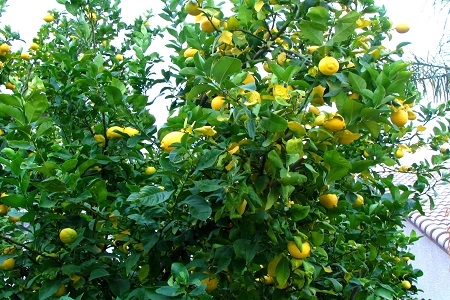
0
0
文章
张祥明
2018年05月11日


1.增加光照
幸福树较喜欢阳光,若长时间放在没有阳光的地方,就算水分与养分都充足的情况下,其叶子也是会出现下垂的现象,所以要适当的增加光照。若有条件的情况下,可以长期放在阳光下摆放,若是无条件的,那么每天至少要在阳光下摆放3小时以上。
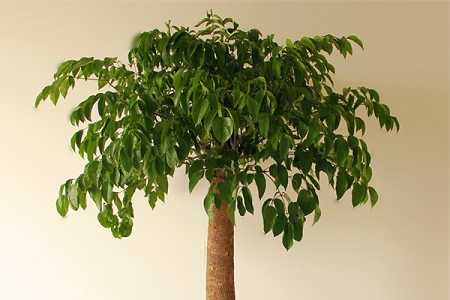
2.减少浇水
虽说幸福树是比较喜欢潮湿的环境,但这并不代表盆土可以长期过于潮湿(水培的除外),且盆中也不要出现积水,否则会导致其根部无法正常吸收水分与养分,而叶子则也无法正常生长,便会慢慢下垂,失去生机。此时要停止浇水,在盆土上1厘米较干时,方可在恢复浇水。

3.自然现象
在越冬期间,高温与低温相差过大、室内的温度偏低时或者是冬季室内通风不佳时,幸福树容易出现叶子下垂的现象。这属于一种正常的自然反应。只需要正常养护即可。
4.换盆缓苗
换盆缓苗也会造成幸福树叶子下垂,但无需担心。因为在给它换盆时,多多少少都会对其根须造成伤害,所以叶子才会下垂。此时只需要将植物放在阳光充裕的地方摆放即可,让其慢慢恢复。

1
1
文章
巴黎铁塔
2018年05月11日

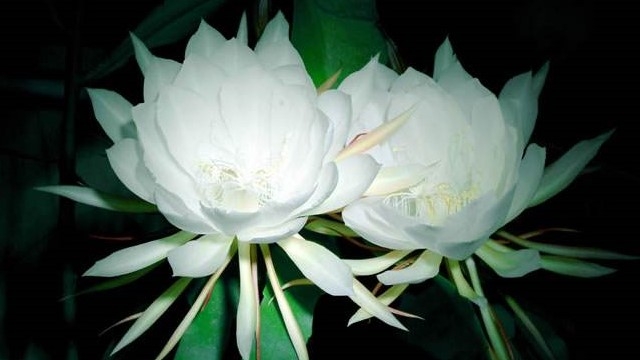
1、增加浇水
原因:昙花是比较喜欢湿润环境的一种花卉。若是长时间没有给它浇水或者是给它浇的水太少,植株就有可能会缺水,进而使得叶子发黄。
解决方法:增加浇水的频率。但要注意每次浇的水量不能太多,以免土壤之中产生积水伤害到它的根系。

2、提高温度
原因:昙花非常怕冻,一旦冬天的时候受到冻害,整个植株就会开始发蔫,发软,叶子也会有发黄干枯的迹象。
解决方法:将昙花放到温暖的环境之中,然后找到它被冻伤的茎叶,统统剪掉。剪的时候不要心疼,因为这些枝叶留在植株上不但没有作用,反而会消耗掉大量的养分。

3、除病虫害
原因:在被一些病虫害感染之后,昙花的叶子也可能会变黄。
解决方法:发现病虫害后,首先要确定生病的种类,然后据此采取相应的除虫喷药手段进行治疗。
4、适时遮阴
原因:阳光太强的时候不能直接将昙花放到太阳下曝晒,否则会将它的叶片晒伤,使其发黄。
解决方法:在阳光太强的时候为遮阴,若是已经被晒伤了,那就将它发黄的叶子摘除,再搬到室内无法被太阳直射的地方慢慢养护。
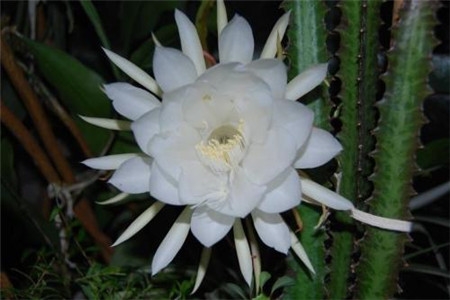
0
0
文章
张祥明
2018年05月11日


1.浇水
浇水是影响它叶子变色的一大点,如果喷水太多它的叶子就会变颜色。它是比较喜欢排水良好的土壤的,在它生长的时候我们需要等到它干了再浇,如果没干就不要浇,不要让盆里面积水,要不然根还会烂掉。这一种植物是耐旱但是不耐涝的,所以浇水一定不能太频繁。如果浇水太多它的叶子会变成黄色,严重的时候它还会掉落。当然,我们把它放在比较阴凉通风的地方是解救它的一个大方法。
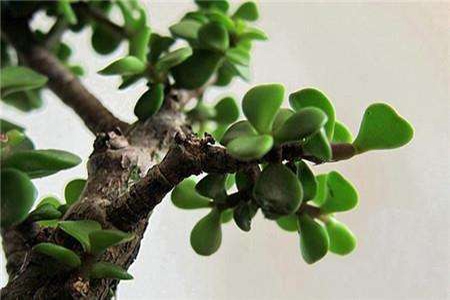
2.光照
光照也是会影响它的叶子变色与否的。它本身的颜色应当是紫褐色甚至浅褐。如果新的枝条在光下是紫红色的,那光就比较充足,假若它是绿色的,光就不太足了。因此我们要给它充足的光照,如果它待在半阴凉的地方,根茎就很容易徒长,分枝也不太好,而且变色会很明显。
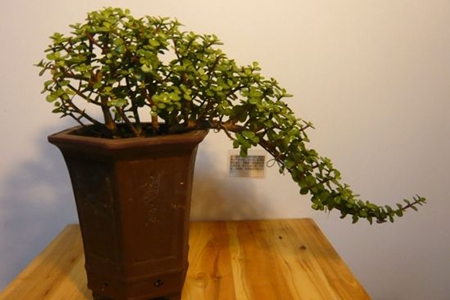
3.施肥
它有自己需要的肥料。但是给它的肥料不能够太浓厚,当然也不能经常给它浇。一般情况下,我们只要等到换土之时才给它加一些。

0
1
文章
韩塞
2018年05月11日

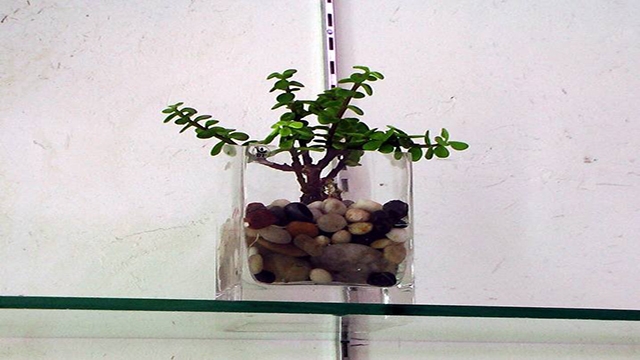
1、检查
首先我们需要做的是检查一下植株的烂根状况,看一下情况是否严重,烂根的范围是不是太大,而且能不能继续活下去,如果能的话就可以拯救一下它,不能的话只能够选择放弃了。

2、修根
这个时候我们需要做的是将它烂掉的根剪去,烂掉的枝叶同样也要剪除。修剪的时候需要注意一下,必须要让把它修干净,而且修剪的时候可以适当往正常的枝叶延伸一下,这样子留下的就一定是没有烂掉的枝条了。
3、换盆
修剪之后,我们要看一下这个盆是不是符合它,当植株的大小与盆的大小不合适之时,我们要给它换盆。小的配小盆,大的配大盆。一定不能够将太小的苗放在太大的盆里,要不然水流失得很慢,这样子还会再烂根。

4、浇水
再给它换好盆之后,我们需要做的是控制一下浇水,不能给它浇太多水,而且时间也要控制好,如果是秋冬时节的话中午浇水是可行的,但是如果是春夏的时候还是只能够在早上和晚上进行。
5、通风
通风是必要的,尤其是当它的烂掉之后我们要确保它的通风状态,这样子它才能够好的快,而且长得也会比较好,将它放在通风不好的环境里它很难长得好。
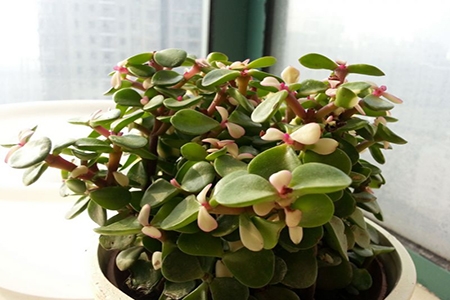
0
1
文章
张祥明
2018年05月11日


1.增加光照
对于金鱼吊兰来说,阳光是生长过程中必不可少的一个重要因素,在接受光照的同时,植物自身也在储蓄能量,而此植物开花前则需要充裕的阳光才能保证正常开花;它的花期是冬季,所以根部不必担心会被阳光晒伤,可以全天候的放在阳光充裕的地方摆放,这样开出的花不但数量多且花色也会非常艳丽。但其它三个季节则要适当的进行遮阳。

2.增加水分
金鱼吊兰在冬季会出现休眠的状态,但只是一小段时,这段时间过后就会开花,但此时很多人会减少浇水,其实此时应该增加浇水,只要保证盆内不出现积水现象即可,温度要控制在20度左右。这样会更容易让其开花,且会开的更加充分。除了浇水外,还要经常给植物周边或是叶子喷洒些水,过干的环境会让它掉叶,也会影响其开花。
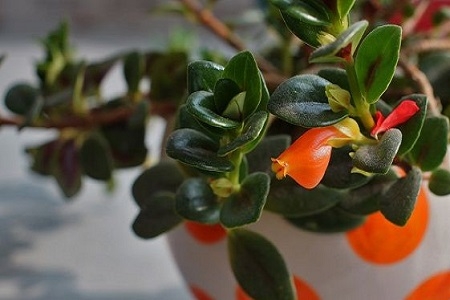
3.增加空气流通性
冬季室内的空气流通性都比较差,这对此植物的开花来说也是会有一定影响的,尤其在其花芽生长时,若空气流通性过差,会导致它暂停生长,最终无花可开。
4.增加养分
很多友友在养花时,第一年知道按时施肥,到了第二年,就将其抛于脑后,养分不充足时,也时花芽也是无法正常生长的。开花前要增加磷肥的施放;但开花时就不要在进行施肥了。
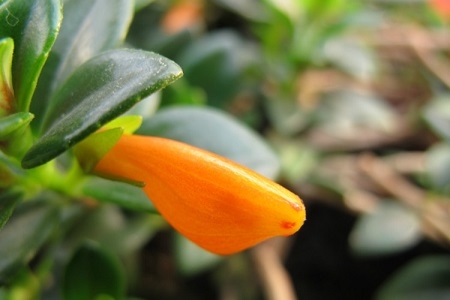
2
2
文章
Miss Chen
2018年05月10日

Description: This herbaceous perennial plant is about 4-6" tall, consisting of 1-2 basal leaves and a flowering stalk with a single flower. Immature plants produce a single leaf and fail to flower, while mature plants that bloom produce a pair of leaves. The basal leaves are up to 6" long and 2" across. They are elliptic, lanceolate, or narrowly ovate, and smooth (entire) along their margins. The upper leaf surface is mottled pale green and brownish or grayish green, while the lower leaf surface is pale to medium green. Both leaf surfaces are glabrous; the upper leaf surface is often waxy. The leaves often curve upward slightly from the midvein to the margins. A naked flowering stalk develops between the basal leaves of mature plants. This stalk is light green to reddish brown and glabrous; it nods downward at its apex, where the flower occurs.
Each nodding flower is about 1½" long and across; it consists of 6 white tepals, 6 stamens with long yellow anthers, and a slender style with a stigma that has 3 lobes that spread outward. The tepals are linear-lanceolate and strongly recurved, while the stamens and style are exerted. The blooming period occurs during mid-spring and lasts about 2 weeks. Each fertilized flower is replaced by a 3-chambered seed capsule that is ovoid and about ¾" long. Each chamber of the seed capsule contains 2 rows of flattened seeds. The root system consists of a corm that is several inches below the surface of the ground; this corm produces fibrous roots at its base and occasionally sends out underground stolons that can form new plants a few inches away from the mother plant. White Trout Lily can produce large colonies of plants if it is left undisturbed for several decades.

Cultivation: The preference is dappled sunlight during the spring, moist to mesic conditions, and a rich loamy soil with decaying leaf mould. Situations involving more shade are tolerated later in the year. The foliage withers away during the summer. It takes several years for a new plant to fully develop and bloom. Corms can be transplanted successfully during the fall, while the establishment of new plants from seeds is difficult and slow.
Range & Habitat: The native White Trout Lily is a common plant that occurs in every county of Illinois, except for Jo Davies county in the extreme NW corner of the state (see Distribution Map). Habitats include moist to mesic deciduous woodlands and gentle slopes in wooded areas. An abundance of this plant indicates that a woodlands has never been subjected to the plow or bulldozed over. White Trout Lily is one of the spring wildflowers that is threatened by the spread of Alliaria petiolata (Garlic Mustard) in wooded areas.

Faunal Associations: The flowers are primarily pollinated by both long-tongued and short-tongued bees, including honeybees, mason bees (Osmia spp.), cuckoo bees (Nomada spp.), digger bees (Synhalonia belfragii), Halictid bees (Halictus spp., Lasioglossum spp.), plasterer bees (Colletes inaequalis), and Andrenid bees (Andrena spp.). The bees suck nectar from the flowers; honeybees and short-tongued bees also collect pollen. An oligolectic bee of Erythronium spp. (Trout Lilies) is Andrena erythronii. Less typical insects visiting the flowers for nectar include the Giant Bee Fly (Bombylius major), butterflies, and skippers. Trout Lilies (Erythronium spp.) are occasionally eaten by White-tailed Deer, but the damage is usually minor because of the low stature and ephemeral nature of the foliage.
Photographic Location: A deciduous woodlands at Busey Woods in Urbana, Illinois.

Comments: White Trout Lily usually blooms a little earlier than other spring wildflowers in woodlands; this blooming period is short, and immature plants that don't bloom always outnumber mature plants. Both the flowers and foliage are attractive (especially if the latter is mottled). The other Trout Lilies in Illinois are less common; they include Erythronium americanum (Yellow Trout Lily) and Erythronium mesochoreum (Prairie Trout Lily). Yellow Trout Lily has yellow flowers and the lobes of its stigmas are united, rather than spreading. Prairie Trout Lily resembles a White Trout Lily with unmottled foliage. However, it produces a larger seed capsule (about 1" long) that nods downward from its stalk, sometimes touching the ground. White Trout Lily has a smaller seed capsule (about ¾" long) that remains more or less erect on its stalk. The flowers of Prairie Trout Lily are light blue-violet more often than those of White Trout Lily, and its basal leaves tend to be less broad and more strongly folded upward along their midveins.
Each nodding flower is about 1½" long and across; it consists of 6 white tepals, 6 stamens with long yellow anthers, and a slender style with a stigma that has 3 lobes that spread outward. The tepals are linear-lanceolate and strongly recurved, while the stamens and style are exerted. The blooming period occurs during mid-spring and lasts about 2 weeks. Each fertilized flower is replaced by a 3-chambered seed capsule that is ovoid and about ¾" long. Each chamber of the seed capsule contains 2 rows of flattened seeds. The root system consists of a corm that is several inches below the surface of the ground; this corm produces fibrous roots at its base and occasionally sends out underground stolons that can form new plants a few inches away from the mother plant. White Trout Lily can produce large colonies of plants if it is left undisturbed for several decades.

Cultivation: The preference is dappled sunlight during the spring, moist to mesic conditions, and a rich loamy soil with decaying leaf mould. Situations involving more shade are tolerated later in the year. The foliage withers away during the summer. It takes several years for a new plant to fully develop and bloom. Corms can be transplanted successfully during the fall, while the establishment of new plants from seeds is difficult and slow.
Range & Habitat: The native White Trout Lily is a common plant that occurs in every county of Illinois, except for Jo Davies county in the extreme NW corner of the state (see Distribution Map). Habitats include moist to mesic deciduous woodlands and gentle slopes in wooded areas. An abundance of this plant indicates that a woodlands has never been subjected to the plow or bulldozed over. White Trout Lily is one of the spring wildflowers that is threatened by the spread of Alliaria petiolata (Garlic Mustard) in wooded areas.

Faunal Associations: The flowers are primarily pollinated by both long-tongued and short-tongued bees, including honeybees, mason bees (Osmia spp.), cuckoo bees (Nomada spp.), digger bees (Synhalonia belfragii), Halictid bees (Halictus spp., Lasioglossum spp.), plasterer bees (Colletes inaequalis), and Andrenid bees (Andrena spp.). The bees suck nectar from the flowers; honeybees and short-tongued bees also collect pollen. An oligolectic bee of Erythronium spp. (Trout Lilies) is Andrena erythronii. Less typical insects visiting the flowers for nectar include the Giant Bee Fly (Bombylius major), butterflies, and skippers. Trout Lilies (Erythronium spp.) are occasionally eaten by White-tailed Deer, but the damage is usually minor because of the low stature and ephemeral nature of the foliage.
Photographic Location: A deciduous woodlands at Busey Woods in Urbana, Illinois.

Comments: White Trout Lily usually blooms a little earlier than other spring wildflowers in woodlands; this blooming period is short, and immature plants that don't bloom always outnumber mature plants. Both the flowers and foliage are attractive (especially if the latter is mottled). The other Trout Lilies in Illinois are less common; they include Erythronium americanum (Yellow Trout Lily) and Erythronium mesochoreum (Prairie Trout Lily). Yellow Trout Lily has yellow flowers and the lobes of its stigmas are united, rather than spreading. Prairie Trout Lily resembles a White Trout Lily with unmottled foliage. However, it produces a larger seed capsule (about 1" long) that nods downward from its stalk, sometimes touching the ground. White Trout Lily has a smaller seed capsule (about ¾" long) that remains more or less erect on its stalk. The flowers of Prairie Trout Lily are light blue-violet more often than those of White Trout Lily, and its basal leaves tend to be less broad and more strongly folded upward along their midveins.
0
0
文章
Miss Chen
2018年05月10日

Description: This herbaceous perennial plant is up to 1' tall, branching sparingly. It produces both basal and alternate compound leaves with a similar appearance. The stems are reddish green, hairless, and slender. The compound leaves are trifoliate and they have slender petioles. The terminal leaflet has a longer petiolule (basal stalklet) than the two lateral leaflets. These leaflets are up to 1" long and ¾" across. They are ternately lobed, cleft, and hairless. The white flowers occur individually or in groups of 2-3. Each flower spans about ¾" across, consisting of 5 petal-like sepals that are white, no petals, several slender stamens with yellow anthers, and a few green pistils in the center. The blooming period occurs during mid-spring and lasts about 3 weeks. Afterwards, the pistils are replaced by beaked follicles (seedpods that split open along one side) that individually contain several seeds. The root system is fibrous and occasionally small tubers are produced. Vegetative clones of the mother plant are often produced from these tubers; reproduction also occurs by the seeds. False Rue Anemone often forms dense colonies of plants.
Cultivation: The preference is partial sun to medium shade, moist to mesic conditions, and a rich loamy soil with abundant leaf mould.
Range & Habitat: The native False Rue Anemone is fairly common in the majority of counties in Illinois, otherwise it is uncommon or absent (see Distribution Map). Habitats include in rich mesic woodlands and low woodlands along streams where deciduous trees are dominant. This species can be extirpated from a woodlands by an invasion of Alliaria petiolata (Garlic Mustard) and non-native shrubs.

Faunal Associations: Except for visitors of the flowers, little is known about the floral-faunal relations of this species. The pollen of the flowers attracts medium- to small-sized bees and flies primarily, including Halictid bees (Halictus spp., Lasioglossum spp., etc.), Andrenid bees (Andrena spp.), honeybees, Syrphid flies, and other flies. The bees collect pollen, while the flies feed on pollen. Occasionally various beetles also feed on the pollen, but they are less effective at cross-pollination. Some of these insects probably search in vain for nectar, as the flowers lack nectaries. The foliage of False Rue Anemone is rarely browsed by mammalian herbivores (personal observation).
Photographic Location: A mesic deciduous woodlands at Busey Woods in Urbana, Illinois.

Comments: Another scientific name for False Rue Anemone is Isopyrum biternatum. This species blooms a little earlier than many other spring wildflowers in a woodlands, and it has attractive flowers and foliage. Two other members of the Buttercup family that occur in woodlands, Anemone quinequefolia (Wood Anemone) and Anemonella thalictroides (Rue Anemone), resemble False Rue Anemone. Wood Anemone has leaflets that are coarsely serrated along the margins and their lobes taper to sharp points; it also differs from False Rue Anemone by the whorl of leaves underneath its flowers. Rue Anemone also has whorled leaves underneath its flowers, otherwise its foliage is very similar to that of False Rue Anemone (which has alternate leaves along the stems). While Wood Anemone and Rue Anemone produce small clusters of beaked achenes (each containing a single seed within a hardened exterior), False Rue Anemone produces small clusters of beaked follicles that each contain 2 or more seeds. Sometimes the white flowers of Wood Anemone and Rue Anemone have more than 5 petal-like sepals, while the flowers of False Rue Anemone never have more than 5 petal-like sepals.
Cultivation: The preference is partial sun to medium shade, moist to mesic conditions, and a rich loamy soil with abundant leaf mould.
Range & Habitat: The native False Rue Anemone is fairly common in the majority of counties in Illinois, otherwise it is uncommon or absent (see Distribution Map). Habitats include in rich mesic woodlands and low woodlands along streams where deciduous trees are dominant. This species can be extirpated from a woodlands by an invasion of Alliaria petiolata (Garlic Mustard) and non-native shrubs.

Faunal Associations: Except for visitors of the flowers, little is known about the floral-faunal relations of this species. The pollen of the flowers attracts medium- to small-sized bees and flies primarily, including Halictid bees (Halictus spp., Lasioglossum spp., etc.), Andrenid bees (Andrena spp.), honeybees, Syrphid flies, and other flies. The bees collect pollen, while the flies feed on pollen. Occasionally various beetles also feed on the pollen, but they are less effective at cross-pollination. Some of these insects probably search in vain for nectar, as the flowers lack nectaries. The foliage of False Rue Anemone is rarely browsed by mammalian herbivores (personal observation).
Photographic Location: A mesic deciduous woodlands at Busey Woods in Urbana, Illinois.

Comments: Another scientific name for False Rue Anemone is Isopyrum biternatum. This species blooms a little earlier than many other spring wildflowers in a woodlands, and it has attractive flowers and foliage. Two other members of the Buttercup family that occur in woodlands, Anemone quinequefolia (Wood Anemone) and Anemonella thalictroides (Rue Anemone), resemble False Rue Anemone. Wood Anemone has leaflets that are coarsely serrated along the margins and their lobes taper to sharp points; it also differs from False Rue Anemone by the whorl of leaves underneath its flowers. Rue Anemone also has whorled leaves underneath its flowers, otherwise its foliage is very similar to that of False Rue Anemone (which has alternate leaves along the stems). While Wood Anemone and Rue Anemone produce small clusters of beaked achenes (each containing a single seed within a hardened exterior), False Rue Anemone produces small clusters of beaked follicles that each contain 2 or more seeds. Sometimes the white flowers of Wood Anemone and Rue Anemone have more than 5 petal-like sepals, while the flowers of False Rue Anemone never have more than 5 petal-like sepals.
0
0



